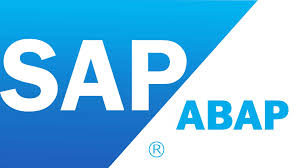 41. What is the step by step process to create a table in data dictionary?
41. What is the step by step process to create a table in data dictionary?
Answer1
steps to create database tables
1.go to se11
2.give name the database table
3.give short description for the table
4.Give delivery class name as A and data browser / table view maint as Display/maintenence allowed
5.select fields tab
6.give field name data type(user defined element type/built-in-type),short text
7.select technical settings tab ,give data class as appl0 and size category as 0
8.save it
9.go utillities menu click table contents select create and enter the field values then select display in table contents and u can view the table values with field lables
Answer2
bottom to top approach:
_________________________
step 1:
creating a domain:
*se11,select the object type as domain ,name it ,create,description,enter the datatype and length(size),save ,activate
step2:
creating a dataelement;
se11,select the object type as :date element,name it ,create,desc,assign it with a domain what we created now,save,activate it.
step3:
creating a table;
se11,select the object type as table,name it, create,
enter the field name and assign it with the data element instead of assigning a datatype to it,
like this create req fields:
on behalf of this:
table maintainence:
assign the type of the table ie.,A C G L S
NEXT
maintaince:
allowed,not allowed ,allowed with restricions
______________________________________________
fields of a table:(as descripted above)
___________________________________________
techical settings:
A0
OR
A1
AND
BUFFERED OR NON-BUFFERED
42. Can a transparent table exist in data dictionary but not in the data base physically?
Answer1
NO. TRANSPARENT TABLE DO EXIST WITH THE SAME STRUCTURE BOTH IN THE DICTIONARY AS WELL AS IN THE DATABASE,EXACTLY WITH THE SAME DATA AND FIELDS.
No,
at the point you will activate your table a same transparent table is going to be create in database
Answer2
Yes, a transparent table(definition) can exist in the data dictionary and not in the database. In this case, it is not activated
43. What are the domains and data elements?
domains:
___________
domains are the dictionary objects that are assigned with constants and data types
data elements:
______________
data elements are dictionary objects that are assigned with the domains.
uses:’
* data elements are used to create relation between tables.
* data elements are used to transfer the data from one R/3 to another R/3.
* to create search helps.
44. What is a collect statement? How is it different from append?
APPEND :
IT IS USED TO GET THE RECORD FROM THE INTERNAL TABLE HEADER TO THE BODY AREA IT ALLOWS DUPLICATION
COLLECT:
IT IS USED TO A GET A RECORD FROM HEADER TO THE BODY AREA BUT IT WILL NOT ALLOW ANY DUPLICATION EXCEPT IF THERE IS ANY NUMERIC FIELS IT ADDS THAT FIELDS DATA BUT NOT AS A NEW RECORD
45. In the ‘select’ statement what is “group by”?
Group by clause is used to fetch the data from the table by the specified field
ex.select count (*) from emptable group by deptno where deptno = 1.
It is used to find the number of employees present in the specified department no.
46. How can I copy a standard table to make my own z_table?
WE CAN CREATE A STRUCTURE LIKE THE SAME STRUCTURE AS DATABASE TABLE AND WE CAN USE
SELECT* FROM DATABASE TABLE INTO TABLE ITAB
OR
INSERT INTO ITAB VALUES DATABASE TABLE
From Excel to ABAP – Is batch mode possible ?
DATA w_file TYPE string.
* Convert the file path into string
w_file = p_input.
* Internal Table should have same field sequence as EXL File.
CLEAR t_upload.
REFRESH t_upload.
* Call function to upload the data into internal table
CALL FUNCTION ‘GUI_UPLOAD’
EXPORTING
filename = w_file
filetype = ‘ASC’
has_field_separator = ‘X’
TABLES
data_tab = t_upload
EXCEPTIONS
file_open_error = 1
file_read_error = 2
no_batch = 3
gui_refuse_filetransfer = 4
invalid_type = 5
no_authority = 6
unknown_error = 7
bad_data_format = 8
header_not_allowed = 9
separator_not_allowed = 10
header_too_long = 11
unknown_dp_error = 12
access_denied = 13
dp_out_of_memory = 14
disk_full = 15
dp_timeout = 16
OTHERS = 17.
IF sy-subrc NE 0.
* MESSAGE ID sy-msgid TYPE sy-msgty NUMBER sy-msgno
* WITH sy-msgv1 sy-msgv2 sy-msgv3 sy-msgv4. ELSE.
* Delete the first row of heading from the uploaded table
DELETE t_upload INDEX 1.
ENDIF. ” IF sy-subrc EQ 0.
47. What is the difference between AT SELECTION-SCREEN and AT SELECTION-SCREEN OUTPUT?
AT SELECTION-SCREEN is the PAI of the selection screen whereas
AT SELECTION-SCREEN OUTPUT is the PBO of the selection screen.
48. What is the difference between SY-INDEX and SY-TABIX?
Remember it this way à TABIX = Table.
So when you are looping over an internal table, you use SY-TABIX.
When you use DO … ENDDO / WHILE for looping, there is no table involved.
So you use SY-INDEX.
For READ statement, SY-INDEX is used.
49. What is the difference between VIEW and a TABLE?
A table physically stores data.
A view does not store any data on its own. It can contain data from multiple tables and it just accesses/reads data from those tables.
50. What is the difference between Customizing and Workbench request?
A workbench request is client independent whereas a Customizing request is client dependent.
Changes to development objects such as Reports, Function Modules, Data Dictionary objects etc. fall under Workbench requests.